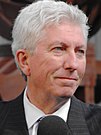Canadian federal election, 2000
|
|
||||||||||||||||||||||||||||||||||||||||||||||||||||||||||||||||||||||||||||||||||||||||||||||||||||||||||||||
|
||||||||||||||||||||||||||||||||||||||||||||||||||||||||||||||||||||||||||||||||||||||||||||||||||||||||||||||
|
||||||||||||||||||||||||||||||||||||||||||||||||||||||||||||||||||||||||||||||||||||||||||||||||||||||||||||||
|
|
||||||||||||||||||||||||||||||||||||||||||||||||||||||||||||||||||||||||||||||||||||||||||||||||||||||||||||||
| Popular vote by province, with graphs indicating the number of seats won. As this is an FPTP election, seat totals are not determined by popular vote by province but instead via results by each riding. | ||||||||||||||||||||||||||||||||||||||||||||||||||||||||||||||||||||||||||||||||||||||||||||||||||||||||||||||
|
||||||||||||||||||||||||||||||||||||||||||||||||||||||||||||||||||||||||||||||||||||||||||||||||||||||||||||||
The 2000 Canadian federal election was held on November 27, 2000, to elect 301 Members of Parliament of the Canadian House of Commons of the 37th Parliament of Canada.
Since the previous election of 1997, small-"c" conservatives had begun attempts to merge the Reform Party of Canada and Progressive Conservative Party of Canada as part of the United Alternative agenda. During that time, Jean Charest stepped down as leader of the Progressive Conservatives and former Prime Minister Joe Clark took over the party and opposed any union with the Reform Party. In spring of 2000, the Reform Party became the Canadian Alliance, a political party dedicated to uniting right-wing conservatives together into one party. Former Reform Party leader Preston Manning lost in a leadership race to who became leader of the new Canadian Alliance party.
The federal government called an early election after being in office for just over three years (with a maximum allowed mandate of five years). The governing Liberal Party of Canada won a third consecutive majority government, winning more seats than the previous election. The Canadian Alliance made some minor gains, such as electing two Members of Parliament (MPs) from the province of Ontario. The Bloc Québécois, New Democratic Party (Canada) and the PC Party all lost seats. As the 1993 and 1997 federal elections involved vote-splitting between the Reform Party and the PC Party, the situation was repeated again between the Alliance and the PC Party, which in Canada's First Past the Post system allowed many Liberal candidates with a plurality of votes to win.
...
Wikipedia





